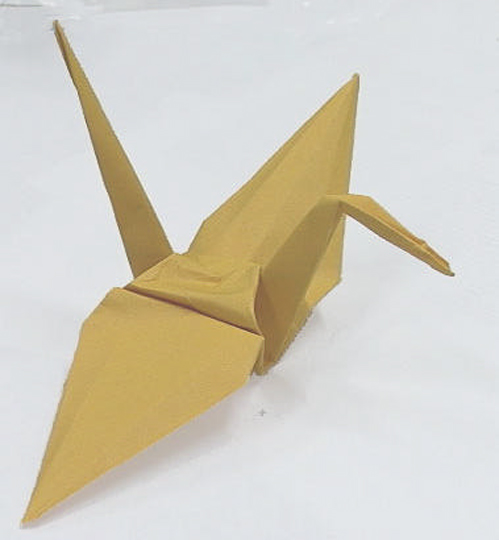“Origami Desk” by Ju
Conference:
- SIGGRAPH 2001
-
More from SIGGRAPH 2001:


Type(s):
E-Tech Type(s):
- Interfaces & HCI
Entry Number: 17
Title:
- Origami Desk
Presenter(s):
Collaborator(s):
Description:
With Origami Desk, users learn to fold paper into beautiful shapes. It improves on the inscrutable origami diagrams we all know and love by showing videos that demonstrate what the hands should do, projecting lines onto the paper to indicate where the folds should be, and monitoring the paper folding to give budding origami artists feedback if their folding should go awry.
Origami Desk utilizes projection, electric field sensing, and low-cost radio-frequency identification tags to enable computer users to break free from the CRT-keyboard-mouse interaction paradigm. These technologies allow interactions in the user’s space, eliminating the need for metaphoric mapping between the digital world and the physical world. Electric field sensing detects where a user’s hands are by measuring capacitance over the work surface. Coupled with the visual interface, this sensor allows dynamic mapping of digital buttons and handles.
Origami Desk breaks new ground in the RF-tagging domain by measuring changes in the resonant frequencies of electromagnetic foil patterns embedded in the origami paper. The coils are coupled to create certain shifts in frequency as the origami paper is folded. These readings in turn allow the computer to infer and provide feedback on whether the user has properly completed the folding step. The projected workspace is delineated into three types of spaces that help choreograph the user’s actions and prevent occlusion or inadvertent triggering of commands: interaction areas, display areas, and work areas.
Origami Desk is a powerful embodiment of how real-world graphics, interaction design, and innovative sensing technologies can be pragmatically integrated to create interactive environments centered around the active human user.
Other Information:
Collaborators
Origami Desk is a joint project
between House_n and the Media
Lab at MIT.
Exhibit design
Leonardo Bonanni
RF tag engineering
Richard Fletcher
Graphical interface design
Rebecca Hurwitz
Tilke Judd
Jenn Yoon
Interaction design
Wendy Ju
Electrical field-sensing
engineering
Rehmi Post
RF engineering
Matt Reynolds
Our thanks to Neil
Gershenfeld, Michael Hawley,
and Kent Larson for making this
collaboration possible.
References
Cooperstock, J.R., Fels, S., Buxton, W., & Smith, K. (1997). Reactive environments.
Communications of the ACM, 40, (9), 65-73.
Omojola, O., Post, E.R., Hancher, M.D., Maguire, Y., Pappu, R., Schoner, B., Russ,
P.R., Fletcher, R. & Gershenfeld, N. (2000). An installation of interactive furniture.
IBM systems journal, 39, 3/4 (Fall 200), 861-879.
Riley, T. (1999). The un-private house. Henry N. Abrams, NY.
Underkoffler, J., Ullmer, B., Ishii, H. (1999). Emancipated pixels: Real-world
graphics in the luminous room. Proceedings of SIGGRAPH 99, ACM Press, 385-392.
Want, R., Fishkin, P., Gujar, A., & Harrison, B. (1999). Bridging physical and virtual
worlds with electronic tags. Proceedings of CHI ‘99 , ACM Press, 370-377.
Wellner, P. (1993). Interacting with paper on the DigitalDesk. Communications of
the ACM. 40, (7), 87-96.




